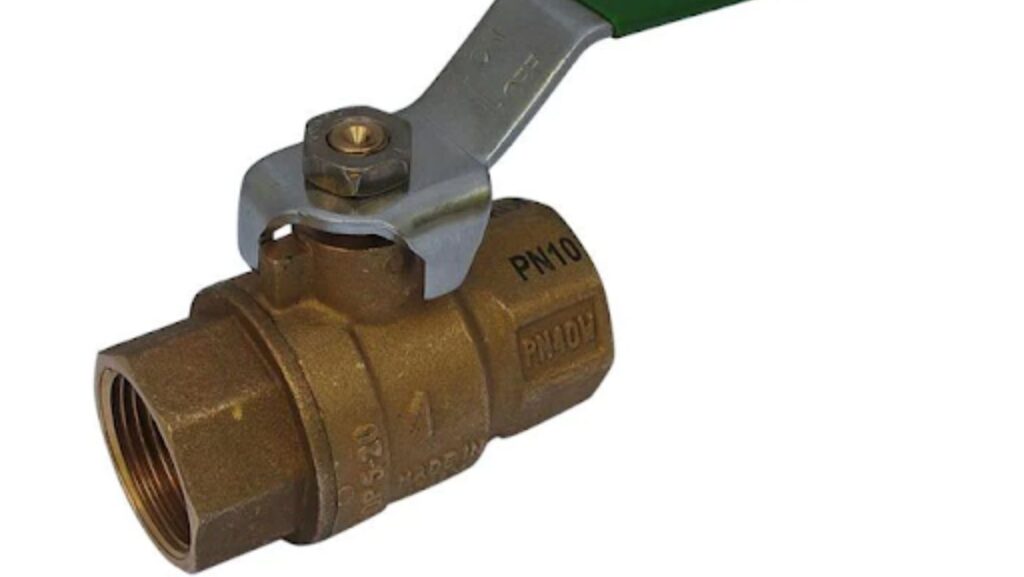Ball valves are a common and essential component in many household plumbing systems. They play a crucial role in controlling the flow of water or gas, making them integral for various applications such as faucets, toilets, and water heaters. To ensure these valves function optimally and have a long lifespan, it’s important to implement regular maintenance practices. This article explores some valuable tips for maintaining ball valves in your home to extend their longevity.
Contents
Table of Contents
ToggleUnderstanding Ball Valves
Ball valves consist of a spherical disc inside a housing, often made of metal or plastic. The disc has a hole (or port) that aligns with the flow direction when the valve opens. When the valve is closed, the hole in the disc is perpendicular to the flow, blocking it. This simple design allows for quick and reliable control of fluid flow.
Why is it Important to Maintain ball valves?
It is important to maintain ball valves at home for several reasons.
- Proper maintenance can help extend the valves’ lifespan, saving homeowners money on replacement costs.
- Regular maintenance can help prevent leaks, save water and energy, and prevent damage to property.
- Well-maintained ball valves are more likely to operate smoothly and reliably, reducing the risk of accidents or disruptions to service.
Ball valve maintenance
There are a few simple best practices that homeowners can follow to maintain their ball valves:
Regular Inspection
The first step in maintaining ball valves is regular inspection. Look for any visible signs of wear, corrosion, or damage. Inspect the valve handle or lever to ensure it operates smoothly without excessive force. If you notice any leaks or hear hissing sounds around the valve, it’s a sign that maintenance is required.

Handle And Lever Maintenance
Handles and levers are essential components for operating manual ball valves. Check the handle or lever for any signs of wear or damage. If they’re loose or wobbly, tighten them to ensure a firm grip. Lubricate the moving parts of the handle to maintain smooth operation. If you find any broken or missing handles, replace them promptly to prevent potential accidents or damage to the valve.
Lubrication
Proper lubrication is key to the smooth operation of ball valves. Over time, the ball and stem can become stiff and difficult to turn. Regularly apply a high-quality lubricant to the valve stem to maintain their functionality. This will prevent corrosion and ensure that the valve operates easily without the need for excessive force. Remember to use an oil compatible with the materials of the valve to avoid damage.
Leak Detection
Leaks around a ball valve can indicate wear, damage, or improper installation. To detect leaks, apply a soapy water solution to the valve’s connection points. If bubbles form when the valve is open or closed, it indicates a leak. In such cases, you may need to replace the seals or gaskets. It’s essential to address leaks promptly, as they can lead to water damage and increased utility bills.
Avoid Over-Tightening
One common mistake homeowners must avoid when maintaining ball valves is over-tightening them. Ball valves don’t require excessive force to operate, and over-tightening can lead to damage, making it difficult to open and close the valve. When closing a ball valve, turn the handle until it stops, and don’t apply additional force. Over-tightening can result in a damaged valve and may require a costly replacement.
Seasonal Maintenance
In regions with extreme temperatures, preparing your ball valves for seasonal changes is essential. Protect your outdoor valves from freezing in cold climates by insulating them with heat tape or foam covers. Check for signs of heat damage in warmer climates, which can cause valve components to become brittle. Regular seasonal maintenance ensures that your ball valves are ready to perform their best, regardless of weather conditions.

Flush The Valve
Sediment and debris can accumulate inside ball valves over time, reducing functionality and potential damage. To prevent this, periodically flush the valve by opening and closing it a few times. This action helps dislodge any build-up, ensuring that the valve works smoothly. Flushing the valve is particularly important for outdoor hose bibs prone to debris accumulation.
Professional Inspection
While homeowners can handle many maintenance tasks, there may be instances when professional inspection and maintenance are necessary. If you encounter issues beyond your expertise or are still determining the condition of your ball valves, consider hiring a licensed plumber or technician. They can assess the situation, make necessary repairs, and ensure the safety and longevity of your plumbing system.
Conclusion
Maintaining ball valves in your home is essential for longevity and proper functioning. Regular inspection, lubrication, handle maintenance, leak detection, and avoiding over-tightening are fundamental steps to keep your ball valves in good condition. Additionally, seasonal maintenance, flushing the valve, and monitoring pressure relief valves are crucial for specific applications. By following these maintenance tips, you can extend the life of your ball valves and enjoy trouble-free operation for years to come.

